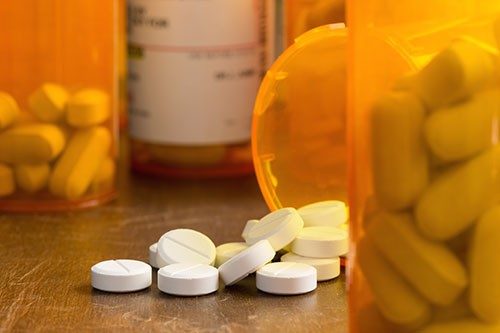FOR IMMEDIATE RELEASE | August 17, 2020
Negative side effects of opioids could be coming from users’ own immune systems (video)
Note to journalists: Please report that this research will be presented at a meeting of the American Chemical Society.
A press conference on this topic will be held Monday, Aug. 17, at 9 a.m. Eastern time online at http://www.acs.org/fall2020pressconferences.
WASHINGTON, Aug. 17, 2020 — In addition to possibly developing opioid use disorder, those who take opioids long term, including patients who have been prescribed the drugs for pain relief, can develop chronic inflammation and heightened pain sensitivity. Scientists now report in a pilot study that some of those side effects might be influenced by the body’s own immune system, which can make antibodies against the drugs.
The researchers will present their results today at the American Chemical Society (ACS) Fall 2020 Virtual Meeting & Expo. ACS is holding the meeting through Thursday. It features more than 6,000 presentations on a wide range of science topics.
A brand-new video on the research is available at www.acs.org/fall2020-opioids.
“Extrapolating from previous work on opioid vaccines, we started thinking that the patient’s own immune system could be responsible for some of the negative effects of long-term opioid use,” says Cody J. Wenthur, Pharm.D., Ph.D., who led the study. “We thought the body could be mounting an immune response and making antibodies against the drugs.”
The researchers, who are at the University of Wisconsin-Madison School of Pharmacy, Scripps Research and Scripps Clinic, realized that one issue with this hypothesis is that commonly prescribed opioids for back pain, such as hydrocodone or oxycodone, are not large enough molecules for the immune system to recognize as antigens. From their past studies, however, they knew that an immune response could be triggered if something larger were bound to the drugs. This could happen in the body when a protein in the bloodstream reacts with the opioid to create a larger molecule in a process called haptenization.
To find out whether long-term opioid users produced antibodies against the drugs, the team performed an enzyme-linked immunosorbent assay (ELISA). Blood samples were obtained from 19 patients who used either hydrocodone or oxycodone for chronic back pain and from three control patients who used over-the-counter remedies (OTCs) or non-pharmacologic approaches. Jillian Kyzer, Ph.D., a postdoc in Wenthur’s lab, along with Hyeri Park, Ph.D., a postdoc in the laboratory of Kim Janda, Ph.D., developed new techniques to synthesize hydrocodone and oxycodone haptens, linking them with a common blood protein to form bioconjugates. These bioconjugates were then coated on the surface of ELISA plates, and the patients’ blood samples were added. If antibodies against the haptens were present in the patients’ blood, they would stick to the surface of the plate and would be detected by another antibody that binds and creates a colorful dye through an enzyme-linked reaction.
Anti-opioid antibodies were found in the plasma of 10 people who regularly took prescription opioids for chronic lower back pain and almost none were found in those who used OTCs. The larger the dose of opioid, the larger the antibody response. “This was surprising,” Kyzer says. “We saw antibody responses in people who were taking large doses for as little as 6 months.”
The scientists are now working on isolating the key opioid antigenic intermediates in the body that prompt the generation of antibodies. One possibility is that the intermediates are modified proteins known as advanced glycation end products (AGEs), which could form when hydrocodone or oxycodone metabolites react with a carbohydrate. AGEs have been implicated in diseases such as atherosclerosis, cancer and Alzheimer’s disease, and they might help explain chronic inflammation in long-term opioid users. The researchers have observed preliminary signals of hydrocodone-associated AGE formation under conditions relevant to those found in the human body, and they are planning to validate these results soon.
Wenthur says the findings support undertaking a broader study to determine the prevalence of antibodies in people based on race, age and sex. “The research could also be helpful in identifying efficacy biomarkers for opioid vaccines that are entering clinical trials,” Kyzer says. “If our findings hold up in subsequent research, you would expect individuals with higher levels of these antibodies to be poor candidates for anti-opioid vaccine therapy.”
The researchers acknowledge support and funding from the ALSAM Foundation, as well as funds from the University of Wisconsin-Madison School of Pharmacy and the University of Wisconsin-Madison Office of the Vice Chancellor for Research and Graduate Education.
The American Chemical Society (ACS) is a nonprofit organization chartered by the U.S. Congress. ACS’ mission is to advance the broader chemistry enterprise and its practitioners for the benefit of Earth and its people. The Society is a global leader in providing access to chemistry-related information and research through its multiple research solutions, peer-reviewed journals, scientific conferences, eBooks and weekly news periodical Chemical & Engineering News. ACS journals are among the most cited, most trusted and most read within the scientific literature; however, ACS itself does not conduct chemical research. As a specialist in scientific information solutions (including SciFinder® and STN®), its CAS division powers global research, discovery and innovation. ACS’ main offices are in Washington, D.C., and Columbus, Ohio.
Media Contact
ACS Newsroom
newsroom@acs.org






